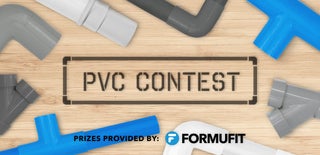Introduction: Marching Band Field Prop
The Marching Band needed a big wall of images for the show. So we used 4 of these huge carts to roll on the field and placed them next to each other. The main images were divided into 4 vertical strips and printed on vinyl. We had one image on each side so they can be rotated during the show to present the other scenes.
The stage name for these is Periaktoi, a Greek term for flats mounted on a movable base. A three sided one is easier to turn and change the scene. In our case, they were four sided since we had four scenes, and the feeling was that they would be more stable in wind.
These are fairly large - about 4 feet wide and 8 feet tall. They needed to hide the percussion section.
They break down fairly easily - the frames slot onto bolts in the bases, and the frames can be flat packed.
Wind is a concern. By having 4 panels, we can spread them out slightly to allow some of the wind through. The bases are fairly heavy, and we put bricks on them if needed.
The other feature was that these were easy to make and low cost - about $100 per cart, not including the vinyl.
Step 1: Parts
The following parts were used for the project:
- (3) 8' 2x4s. Two of them for the frame, and one for cross pieces to hold additional weights for windy days.
- (3) 10' 3/4" Schedule 40 PVC Pipes. When making 4 carts, we used some of the extra pieces - joined them with straight couplers.
- (6) 3/4" PVC Ts
- (12) 2.5" Drywall Screws
- (4) 4" Drywall Screws
- (8) 1/2" x 4" Hex Head Lag Screws
- (2) 4" locking casters - we used two to keep them steady in a small breeze, while still being quick to lock and unlock. But, the price was similar to the non-locking ones, and it may be better to use all locking. During the show, only the ones in the back would be locked, and since the carts rotate, using all locking casters ensures there are always two in the back.
- (2) 4" non-locking casters
- (16) 1" lath screws for the casters.
- (4-8 per cart per performance) 18" cable ties - for the panel bottoms. You can use 16" ones for the two sides where the bottom of the frame is closer to the cart, but it may be easier to use all 18"ones.
- (4 per cart per performance) 12" cable ties - for the panel tops, we used these for other things too, so we used a lot of them
- (10 per panel, so 40 per cart) 3/8" grommets. Also (12) 1/2" grommets - three on the top so the vinyl can be cable-tied to the top PVC pipe.
- (12) 10" or so cable ties for the top of the vinyl.
In addition, the following were used
- 6x8 tarps for testing - we were able to paint on the white tarps.
- PVC cleaner and glue
- A Grommet Tool
- String to tie the vinyl grommets together
Step 2: Base
All of the dimensions for the base and panels are designed to make the most of a 44" wide vinyl print.
To assemble the base, first cut 4 pieces of the 2x4s to 42-1/4" each. Save the leftover pieces - those will be used later. Screw these together in a square with the 2.5" drywall screws. Put the screws away from where the bolts will go later. Pre-drilling the holes first will help a lot in preventing the wood from splitting.
Measure in the corners 1/25" and mark them on each side to help center the PVC cross pieces. These marks do not need to be exact, but the they should be the same on both sides. Then use one of the PVC cross pieces to mark where the lag bolts will go. You want them right on the edge so the props have the smallest possible gap between them. Once all 8 holes are marked, use a 15/64" (I may have used 1/2") drill bit to make pilot holes. Then screw in the lag bolts using the PVC cross piece as a guide to how much should stick out.
The PVC cross pieces will be cable-tied to the base for each show, so they will need some support tin the middle. Two sides will need one board, and two sides will need two boards since they are lower. I was able to use the leftover 2x4 pieces to build them up. See the pictures for a guide. I was lucky to have a band saw to cut these out, and basically cut the same amount off each side of the boards, so that the center piece could be used on two of the sides to build it up. The single boards can be screwed in with 2.5" drywall screws, and the 4" drywall screws are for the double pieces. Make sure to pre-drill the holes first
We added two more 2x4 cross pieces to allow weights (bricks) to be attached in windy conditions.
The casters were screwed into the bottom of the base with 1" lath screws - they have a really large pan head.
Step 3: Panels
For the PVC panels, cut three cross-pieces, 37-1/4" each. Glue one T connector on the end as shown. They are all the same. Then, glue a second T on the other side. This is the tricky one - they must be aligned. I either pushed them against the cement walkway, or the garage door after my back started hurting :-).
Once those are made, the rest is easy. Cut four 46-1/8" pieces. Glue two of them into one cross piece one at a time. Then, glue another cross piece on the other ends, also one at a time. You can put the non-glue end in the connector to line them up nicely, and with both of these second cross piece glue ups, make sure the frame stays square by eye. Glue on the second two sides, and finally the top cross piece as before. I glued this last one on with the frame on it's side - much easier to reach that way.
Make four frames per cart.
Step 4: Adding the Vinyl and Final Assembly
For the sides, we had vinyl printed with the scenes we wanted. Each scene was split into four vertical strips each 39" wide. This width was chosen since the printer can do up to 44" wide material, and the extra 5" allows 2.5" on each side to go around the PVC pipe and have a grommet attached so we can tie them to the frame.
To attach the vinyl to the frame, we used 3/8" grommets on the sides - 5 per side. On the top, we added (3) 1/2" grommets so we could cable-tie them to the top of the frames. We used garden twine with a half-hitch one one side, and a taut line hitch on the other so we could make them tight.
To attach the panels to the base, we used one 18" cable tie. You can use more if you like - two is good, and three is probably overkill. We used the smaller cable ties to connect the tops of carts - threading it under on of the cross pieces will keep them from slipping off. We ended up keeping the panel sides together on 3 edges so we could fold the panels up accordion style to store them in groups of four, and that made assembly easy since we did not have to remember the order each time, though we did number them just in case.
For the tarps with the numbers, we found some paint that stuck to the tarp, used a projector to project the number on the tarp for tracking, and painted them in. Since the tarps are six feet wide, the grommets are closer, and we used twine for some and couple connected cable ties for some.
Step 5: Not Recommended: One Panel Prototype
The following was for a prototype. It worked fine, but in any kind of wind, it really swayed a lot. The base was fine, but switching two of the casters for locking casters would help, as well as adding weight, but the base is heavy enough that if you need more weight, then you will have issues with them swaying.
They break down fairly easily - the frames slot into holes in the bases, so the frames can be flat packed.
Step 6: One Panel Prototype: Parts
Parts
- (3) 10' sections of 3/4" Schedule 40 PVC pipe
- (2) 3/4" PVC elbows
- (4) PVC Tees
- 6' of 2x4 wood
- 4; of 2x6 wood.
- (8) 2.5" drywall screws
- (8) metal plates and screws
Special Tools
- PVC cleaner and glue - I used clear for both, but i the panel is painted or covered, it does not matter much
- A 1-1/8" drill bit
Step 7: One Panel Prototype: Base
The base is made from 2x4 and 2x6 boards. The idea is to get them together on the edges to create a 3" deep hole for the PVC to slot into.
The 2x4 boards were cut to 3 foot lengths - that could be adjusted as needed.
The 2x6 was cut to 42" [CHECK] wide. Since the vinyl can be printed up to 44" wide, we allowed for a 1" bleed on each edge for fastening and that leave 42" wide for the max cart/panel width.
The 3/4" PVC piped have an outside diameter (OD) of 1-1/16", so a 1-1/8" spade bit will work OK. The hole was drilled right at the edge since these carts need to be next to each other. There will be a little tear out on the edges as a result, so a metal plate was used to make that edge of the hole stronger.
The casters a 4" ones - very hefty and give good clearance on a bumpy field.
Step 8: One Panel Prototype: Backdrop
The frame is made from 3/4" PVC. 90 degree angles make the top, and there is one cross piece in the middle, and one at the bottom. The frame extends 3" below the bottom cross piece to slot into the base.
By gluing the cross pieces first on a level surface, the frame will be flat.

Participated in the
PVC Contest 2017

Participated in the
Hand Tools Only Contest 2017











